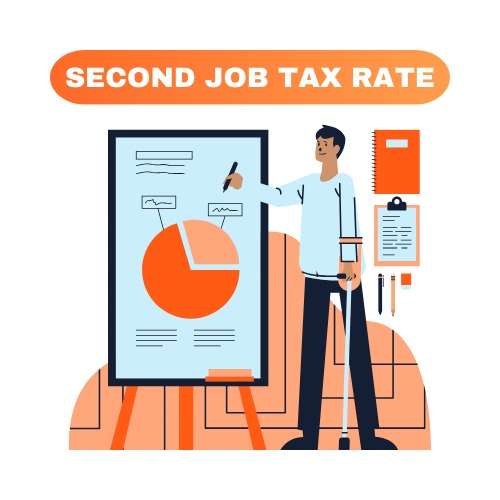Navigating the land of opportunity? Many Australians juggle multiple jobs to maximize their earnings. Yet, the exhilaration of that extra paycheck is often paired with the intricacies of the “Second Job Tax Rate.” In Australia’s progressive taxation landscape, understanding how your additional earnings are taxed becomes paramount. Diving into this topic not only prepares you for financial obligations but can also help in making informed decisions about taking up that second job. Let’s unravel the specifics of this unique tax dynamic Down Under.
Why do Australians seek a second job?
Economic pressures, rising costs of living, and personal aspirations often drive Australians to take up a second job. Some are motivated by the desire to pay off debts faster, save for future endeavors, or simply to afford a lifestyle they aspire to. Additionally, a second job can also be a means to pursue a passion, gain experience in a different field, or ensure a safety net in unpredictable economic climates.
How is tax calculated for the primary job?
For the primary job in Australia, individuals enjoy what’s termed as the “Tax-Free Threshold.” This means, that up to a certain income, no tax is deducted. Once this threshold is surpassed, tax rates apply progressively. They structure the tax brackets in a way that increases the percentage of tax as income rises. It’s a tiered system, ensuring that individuals are taxed according to their earning capabilities. Essentially, the more you earn, the higher the tax rate applied.
Distinguishing between primary and secondary job taxes
For those with multiple jobs, tax implications become a tad more complex. The primary job benefits from the tax-free threshold, whereas the secondary job is subject to taxation from the first dollar earned. This is because the tax system assumes that the combined income from both jobs might push an individual into a higher tax bracket. As a result, the second job tax rate is typically higher to prevent underpayment throughout the financial year. The aim is to balance out any potential shortfalls that might arise when considering both incomes together.
Delving into the “Second Job Tax Rate”

Introduction to the higher tax rates for secondary employment
In Australia, many individuals observe that tax on their secondary employment appears to be at a steeper rate compared to their primary job. This isn’t a random decision by the Australian Taxation Office (ATO) but is based on an assumption. The system predicts that a second job might propel your total earnings into a higher tax bracket, thus resulting in a seemingly increased “second job tax rate”. It’s like ascending a stairwell where each step represents a new bracket, and the more you earn, the higher you climb.
Reasons behind the higher tax for second jobs
The primary reason for this apparent increase in the tax rate for secondary employment is to ensure individuals aren’t underpaying taxes during the fiscal year. The Australian tax system works progressively, meaning the more you earn, the larger the percentage you pay in tax. By taxing the second job at this higher rate, the ATO ensures individuals are appropriately covered, reducing the risk of underpayment. This system essentially tries to strike a balance, keeping taxpayers from facing a hefty bill during tax season due to underpayment from multiple income sources.
Common misconceptions and myths
One widespread myth surrounding the “second job tax rate” is that the tax rate is doubled for your second job. This is not true. The rate itself doesn’t change; it’s the bracket that might. Another misconception is that it’s more tax-efficient to earn less in your second job to avoid a higher tax bracket. In reality, even if you enter a higher bracket, they only tax the income above that threshold at the increased rate, not your entire income. It’s essential to be informed and debunk such myths to make financially sound decisions.
How to Manage Second Job Taxes Efficiently
Opting for a Tax-free Threshold:
In Australia, the tax-free threshold allows individuals to earn up to a certain amount without paying income tax. If you’re juggling a primary job and a secondary one, understanding this threshold is pivotal. For the second job, if you anticipate your total earnings (from both jobs) to be within this limit, you can claim the tax-free threshold for both. This strategy potentially reduces your immediate tax liability. However, tread with caution. If your combined earnings exceed this threshold, you could end up with a tax bill later.
Keeping comprehensive records:
Maintaining a meticulous record of all your earnings, deductions, and tax payments is akin to maintaining a health diary. It offers you insights, helps detect anomalies, and ensures you’re prepared for the tax season. Ensure that you record details from both jobs, including pay slips, invoices, and any work-related expenses. A well-organized system not only eases the tax filing process but also equips you with the data needed should you face audits or tax reviews. In essence, think of it as your financial GPS guiding you seamlessly through the fiscal year.
Seek advice from tax professionals:
While self-management of taxes can seem cost-efficient, a little expert advice never hurts anyone. Tax professionals or consultants have expertise in the intricate details of the tax system, especially when it comes to dealing with multiple sources of income. They can provide tailored strategies, help you maximize potential deductions, and ensure compliance with all tax obligations. Investing in their expertise can save you from potential pitfalls, and missed opportunities, and, most importantly, give you peace of mind. Remember, sometimes, it’s better to ask for directions than to get lost.
Conclusion
With a progressive taxation system in place, it’s crucial to comprehend that the second income gets taxed from the very first dollar, unlike the primary income which benefits from the tax-free threshold. Being informed not only aids in accurate tax declarations but also helps in making informed financial decisions. After all, with more income comes greater responsibility. How are you preparing for your tax obligations with multiple income streams?
FAQs
1. Is the tax rate for my second job always higher than my primary one?
No, the rate is dependent on your combined income. However, the tax is adjusted to ensure you pay the right amount across both incomes.
2. Can I claim the tax-free threshold for both of my jobs?
If your combined income from both jobs is below the threshold, then yes, you can claim for both.
3. What happens if I don’t declare my income from my second job?
The ATO can impose penalties, and you might end up with a significant tax bill at the end of the year.
4. Is it necessary to consult a tax professional for my second job tax?
While it’s not mandatory, seeking advice from a professional can help you navigate the complexities of the tax system.
5. How does the ATO know about my second job?
Employers report your income to the ATO. Hence, it’s always a good practice to declare all sources of income.

